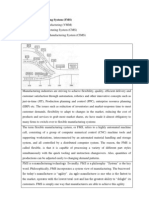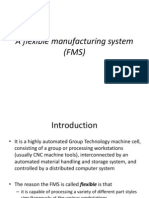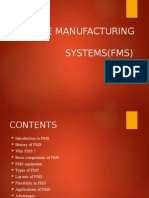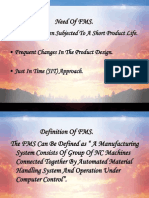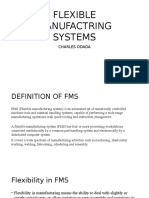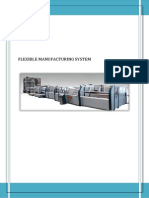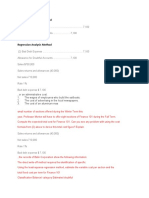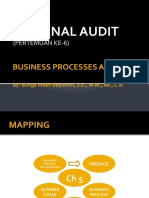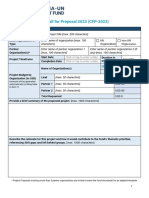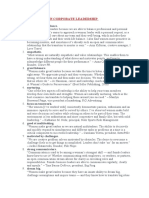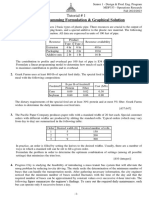0% found this document useful (0 votes)
19 views8 pagesConcept: Automatic Guided Vehicles (AGV)
A Flexible Manufacturing System (FMS) integrates machines, automated material handling, and computer control to efficiently process various part styles simultaneously. It utilizes Automatic Guided Vehicles (AGVs) for material transport and features different workstation types, including CNC machines and inspection stations. FMS aims to improve operational control, reduce labor costs, and enhance responsiveness to production changes, while also having advantages and disadvantages related to adaptability and cost.
Uploaded by
papayb780Copyright
© © All Rights Reserved
We take content rights seriously. If you suspect this is your content, claim it here.
Available Formats
Download as PDF, TXT or read online on Scribd
0% found this document useful (0 votes)
19 views8 pagesConcept: Automatic Guided Vehicles (AGV)
A Flexible Manufacturing System (FMS) integrates machines, automated material handling, and computer control to efficiently process various part styles simultaneously. It utilizes Automatic Guided Vehicles (AGVs) for material transport and features different workstation types, including CNC machines and inspection stations. FMS aims to improve operational control, reduce labor costs, and enhance responsiveness to production changes, while also having advantages and disadvantages related to adaptability and cost.
Uploaded by
papayb780Copyright
© © All Rights Reserved
We take content rights seriously. If you suspect this is your content, claim it here.
Available Formats
Download as PDF, TXT or read online on Scribd
/ 8











